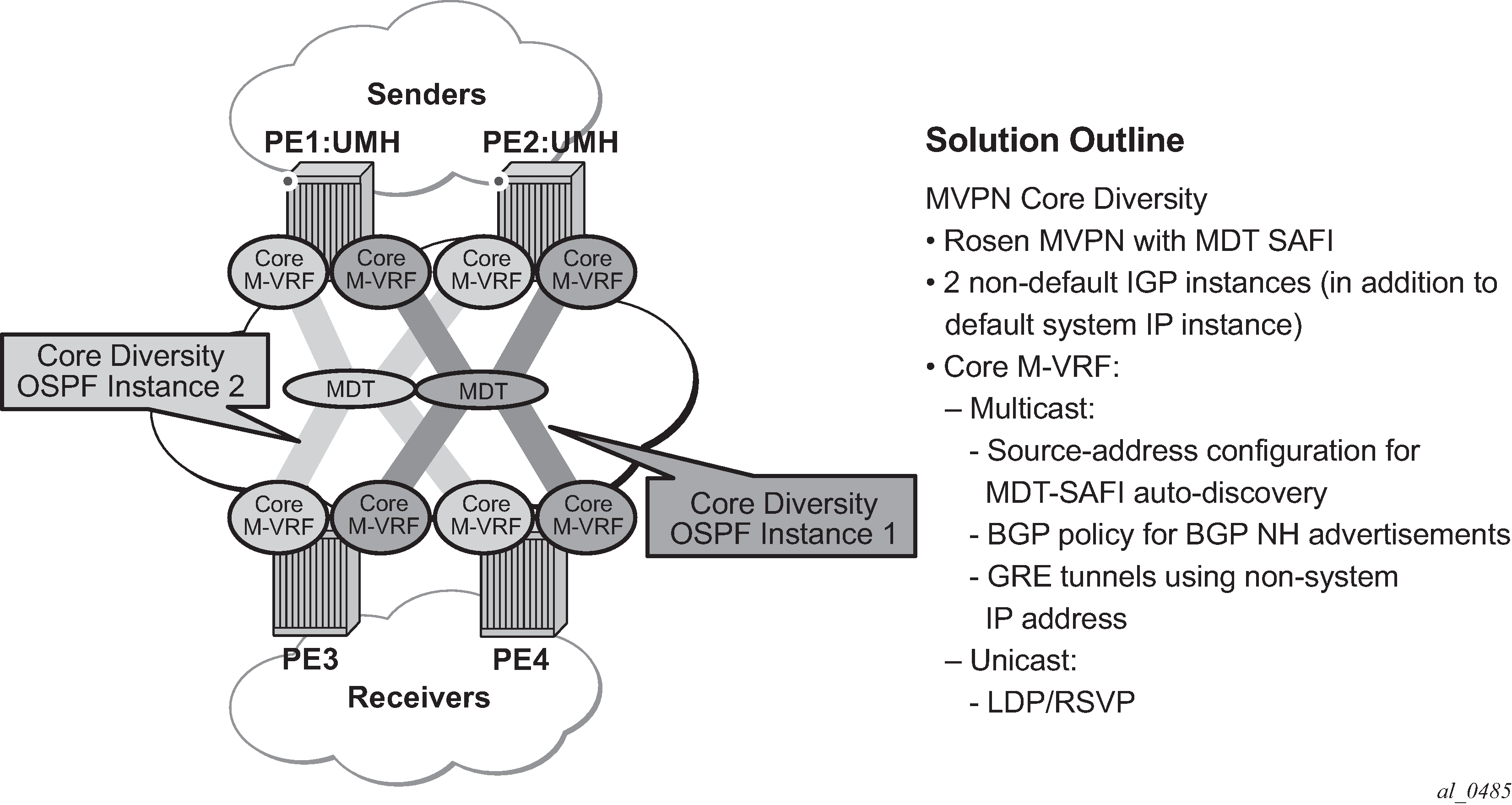Figure: Multicast core diversity depicts Rosen MVPN core diversity deployment:

Core diversity allows operator to optionally deploy multicast MVPN in either default IGP instance or one of two non-default IGP instances to provide, for example, topology isolation or different level of services. The following describes main feature attributes:
-
Rosen MVPN IPv4 multicast with MDT SAFI is supported with default and data MDTs.
-
Rosen MVPN can use a non-default OSPF or ISIS instance (using their loopback addresses instead of a system address).
-
Up to 3 distinct core instances are supported: system + 2 non-default OSPF instances – referred as ‟red” and ‟blue” below.
-
The BGP Connector also uses non-default OSPF loopback as NH, allowing Inter-AS Option B/C functionality to work with Core diversity as well.
-
The feature is supported with CSC-VPRN.
On source PEs (PE1: UMH, PE2: UMH in Figure: Multicast core diversity), an MVPN is assigned to a non-default IGP core instance as follows:
MVPN is statically pointed to use one of the non-default ‟red”/‟blue” IGP instances loopback addresses as source address instead of system loopback IP.
MVPN export policy is used to change unicast route next-hop VPN address (no longer required as of SR OS Release 12.0.R4 - BGP Connector support for non-default instances).
The above configuration ensures that MDT SAFI and IP-VPN routes for the non-default core instance use non-default IGP loopback instead of system IP. This ensures PIM advertisement/joins run in the correct core instance and GRE tunnels for multicast can be set-up using and terminated on non-system IP.
If BGP export policy is used to change unicast route next-hop VPN address, unicast traffic must be forwarded in non-default ‟red” or ‟blue” core instance LDP or RSVP (terminating on non-system IP) must be used. GRE unicast traffic termination on non-system IP is not supported, and any GRE traffic arriving at the PE in ‟blue”, ‟red” instances destined for non-default IGP loopback IP is forwarded to CPM (ACL or CPM filters can be used to prevent the traffic from reaching the CPM). This limitation does not apply if BGP connector attribute is used to resolve the multicast route.
No configuration is required on non-source PEs.
The following are feature restrictions:
VPRN instance must be shutdown to change the mdt-safi source-address. The CLI rollback that includes change of the auto-discovery is therefore service impacting.
To reset mdt-safi source-address to system IP, operator must first execute no auto-discovery (or auto-discovery default) then auto-discovery mdt-safi
Configuring system IP as a source-address consumes one of the 2 IP addresses allowed, therefore it should not be done.
Operators must configure correct IGP instance loopback IP addresses within Rosen MVPN context and must configure correct BGP policies (Before Release 12.0.R4) for the feature to operate as expected. There is no verification that the address entered for MVPN provider tunnel source-address is such an address or is not a system IP address.